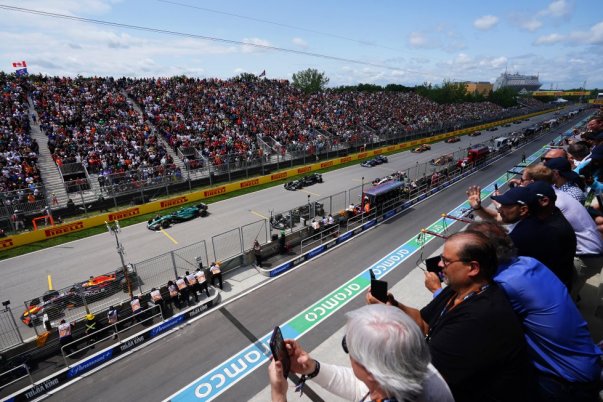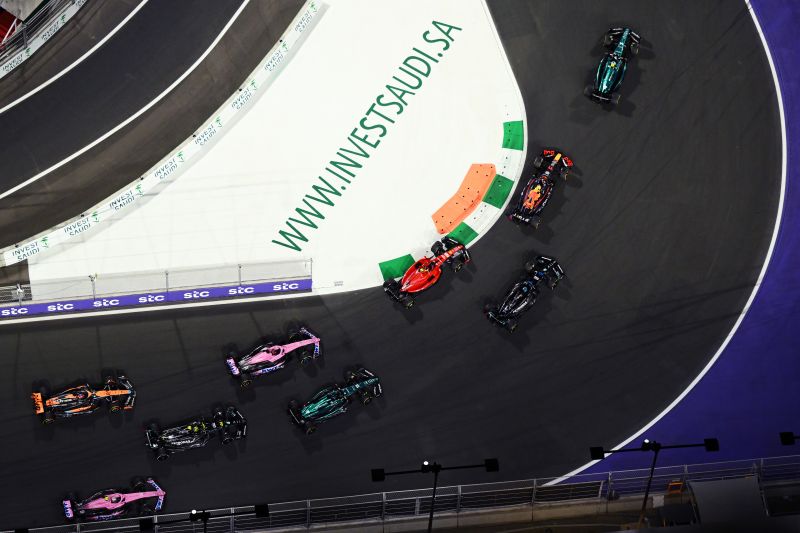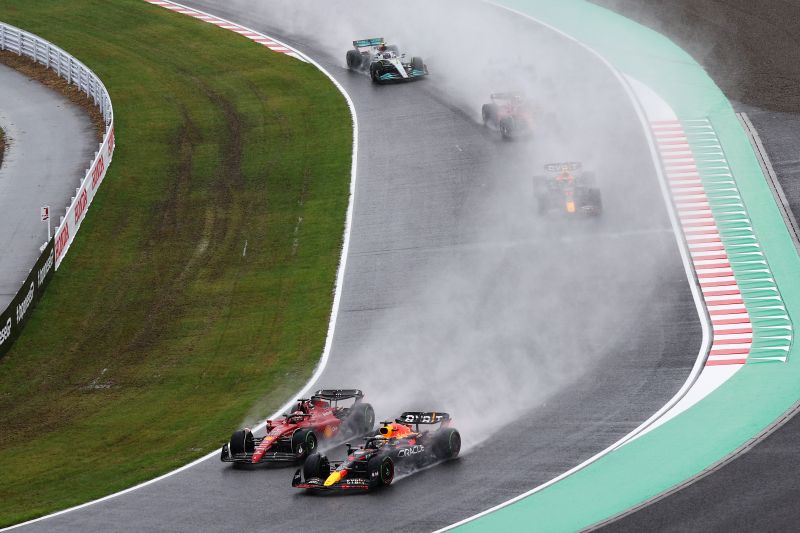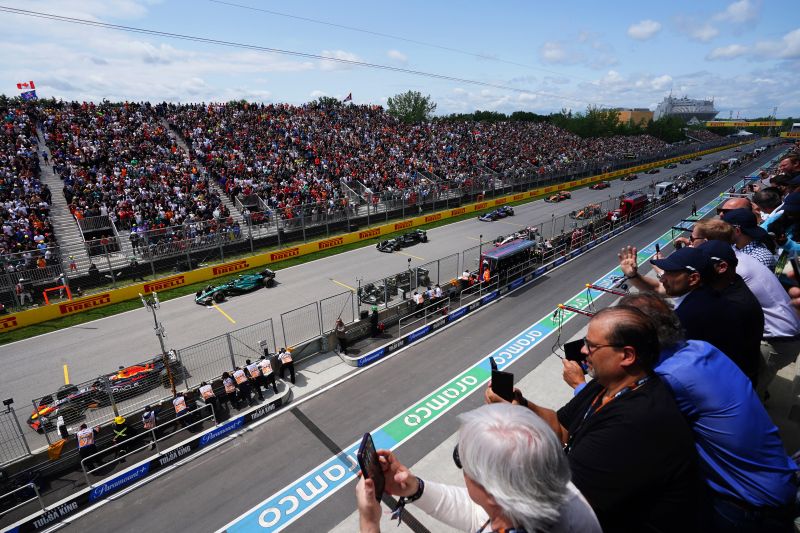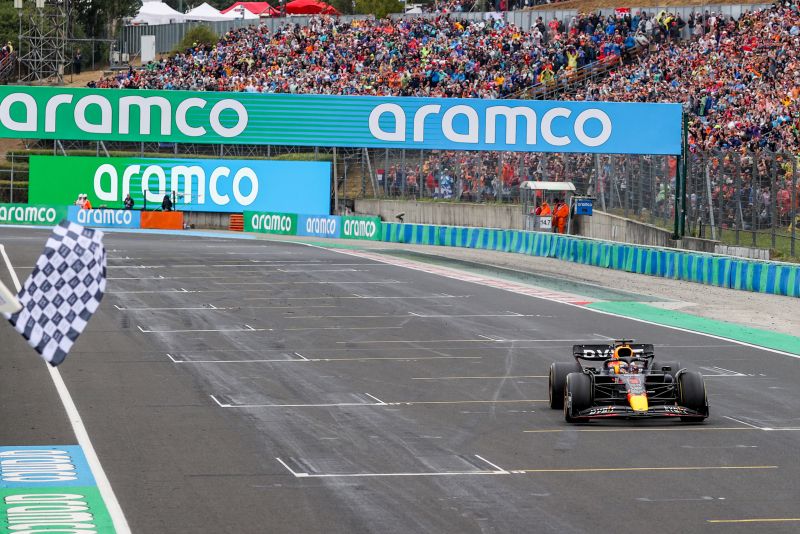The regional realignment process has begun with the 2024 schedule, but there are still many elements in dispute – we’ll show you why F1’s hands are tied in so many cases.
Formula-1 and the FIA published their draft 2024 race calendar earlier than usual, which consists of a standard 24 rounds – although this number of races was also originally planned for the season, only in the case of China due to restrictions related to the coronavirus pandemic, At Imola severe weather intervened.
Given the ever-expanding F1 calendar (although those 24 races, according to Stefano Domenicali, are the ceiling and the perfect number), the burden on teams is a constant theme. Next year, to be precise, there will only be an F1 show in January, with the season itself starting on February 29th with a free practice for the opening in Bahrain, but a test will also take place before that (the official date for this was not specified) until confirmed. Now, but it is certain that it will practice from February 21-23, and the teams will train in Suhair until), and the compulsory rally will end with the Abu Dhabi Grand Prix on December 8.
However, if a decrease in the number of major races is difficult to anticipate, F1 is trying to reduce the burden on the stables by trying to better group the races geographically – all of which, moreover, also reinforces the sport’s messages about sustainability. It was also confirmed during yesterday’s announcement that the first steps had been taken in this direction: Japan moved from autumn to spring between Australia and China, and the four Arab tours were paired.
Of course, it can rightly be said that all this is still not enough and F1 itself promises to take more steps in this direction in the coming seasons. But there are many obstacles to this: Based on the criticisms raised regarding the 2024 schedule, we will find out why it is so difficult to rationalize the Formula 1 racing calendar and why races cannot be arranged based on geographical aspects alone.
Perhaps the most unusual element of the 2024 racing calendar is that three races will take place on Saturday evenings local time: In addition to Las Vegas, which has already made its debut this year (which means a Sunday morning start according to European time), next year, the first two stops of the season, Bahrain and Saudi Arabia do not hold a race on Sunday either. The reason for this is Ramadan: the moving Islamic holiday in 2024 will run from March 10 to April 8 next year, during which time, understandably, no country wanted to host an F1 race.
F1 can therefore choose between two solutions: either separate Saher and Jeddah, or cram both before Ramadan. However, since they hardly wanted to stage a race in February, this could only be resolved by putting the Saudi Grand Prix on Saturday 9 March, one day before the start of Ramadan – but in order to avoid the problems of transporting equipment from Bahrain, the season opener was Submitted on March 2nd. Thus, the two Arabic stations can stay together, which absolutely serves the goals of sustainability.
Bahrain and Jeddah are followed, in order, by Australia and Japan, which were moved to spring as mentioned earlier, and China, which intends to return after cancellations due to Covid. Regional grouping can also be noted here, but it may seem strange at first that a week-long break separates the competitions from one another. This means that team members and drivers are guaranteed to travel home between rounds, so it may appear that the amount of travel is not actually reduced by regional grouping. But this is only partially true, because the equipment remains in that region and does not return to Europe.
As for the specific dates: The empty segment between Melbourne and Suzuka is mainly due to the Easter weekend, which Formula-1 has tried to avoid for some time, even if there has been an example in the past of possibly staging the Malaysian Grand Prix. On the Christian holiday. There is also a logistical reason for the omission between Suzuka and Shanghai: according to reports, the unpredictability of the Chinese customs authorities is the reason why the race has not been held there on back-to-back weekends with the Japanese GP. It made sense to reassemble Singapore here too, but the local promoter insists on the usual September date.
Perhaps the most cited criticism of not only next year’s schedule, but this year’s also, is that already in the first half of the season the field is rushing to North America one race at a time – why can’t that double be done one at a time, making Saves a lot of travel? On the part of Montreal, the answer is obvious, which was also mentioned a few weeks ago during this year’s Canadian Grand Prix weekend: the weather simply does not allow them to stage the race in early to mid May. Although the temperatures are relatively acceptable at that time, let us not forget that it is a semi-street site, which requires a little more preparation, which, however, cannot be done in semi-freezing weather – which is also the reason during covid-19. A year, one of the first tour there was soon canceled.
And vice versa, i.e. why doesn’t Miami move to June? On the one hand, this wouldn’t solve the problem of F1 traveling to America in the middle of the European season (although I would do it for at least two Grand Prix, not just one), on the other hand, Miami itself insists on a May date, so it is being F1 has been hosted by many others, and traditionally they can relate to the event being staged during the period – for example, the tennis tournament held there shortly before. Miami is a prime example of the fact that there are difficult business considerations that cannot be bypassed simply by making the calendar’s composition make more sense in a different way.
With the exception of the detour in Montreal, the Grand Prix of the old continent has been held in one block so far, but F1 still receives a lot of criticism for this, because the competitions here follow each other in a sequence that does not seem logical from the outside. One of the frequently asked questions, for example, is why the Austrian and Hungarian Grand Prix are not paired, because geographically it would be easier to move the field headquarters from Spielberg to Hungary than to travel to Silverstone.
Here too, F1 has to take many aspects into consideration. Although a pairing between Austria and Hungary might seem logical from a travel point of view, it is no longer so certain from a business point of view: it has been said many times in the past that if competitions within the same region are too close on the calendar, they weaken each other’s influence. , since many fans, for example, only attend one in a month, you can afford a trip to the F1 Grand Prix – but if there is a break of a few weeks, even if the actual cost doesn’t change, it will at least spill over into the fans’ wallets. Of course, it should be noted that in the past year or two, F1 has been running with full houses practically everywhere, and this wouldn’t change if Spielberg and the Hungaroring were staged one after the other.
But in addition to this, other factors must also be taken into account, such as the fact that races avoid the dates of other events at the site – or the 24 Hours of Le Mans. For the British Grand Prix, for example, it is important that it not take place on the weekend of the Wimbledon tennis finals: in 2024, this is probably why the race at Silverstone will take place on July 7, instead of the 14, forming Triple tour with Barcelona and Spielberg. Spa and Zandvoort can also be divided into two aspects of a summer vacation to the one mentioned above.
There are also three triples rounds in the 2024 schedule, but opposite there will be a three-week fall break between Baku and Singapore – also not perfect, but an absolute improvement over this year’s Baku and Miami doubles – the doubles and American rounds, and then another two-week gap between Interlagos and Las Vegas.
The end-of-season schedule is set by two fixed points: one, according to the agreement with the Las Vegas Grand Prix, the race will be held there on the Saturday before Thanksgiving. This will be a week later next year, so the competition will be held on November 23rd. The other factor is that Abu Dhabi is the end of the season so it should definitely come after Vegas. However, F1 wanted to put together the Arabian races, so the Qatari GP was moved to Abu Dhabi from the beginning of October. That’s why the season will run until December 8 next year – and if a week-long break is added between Vegas and Qatar, which would be justified given the distance anyway, it would be pushed back for another week, but F1 hardly wanted to get close to Christmas with the last game.
It’s hard to explain why the trio of Austin, Mexico City and Interlagos are included in the table as a header three and why they aren’t squeezed in either direction from the unusually long breaks mentioned, but there are other aspects that could come into play here. Also: The Mexican Round, for example, is usually around Halloween used for the arrangement. On the other hand, it is even possible for F1 teams to enjoy the autumn break before the stressful double-triple season closes.
It can therefore be seen that while the 2024 calendar could be criticized at many points at the outset, F1 has quite a bit of wiggle room due to the fixed aspects – it will be interesting to see how in the following years they manage to steer the composition of the competition calendar into a more logical course.
If you would like to recommend the article to your friends, you can do so using the buttons below:








































